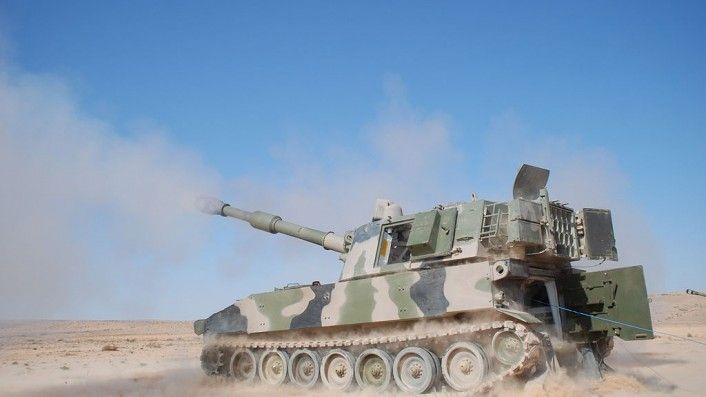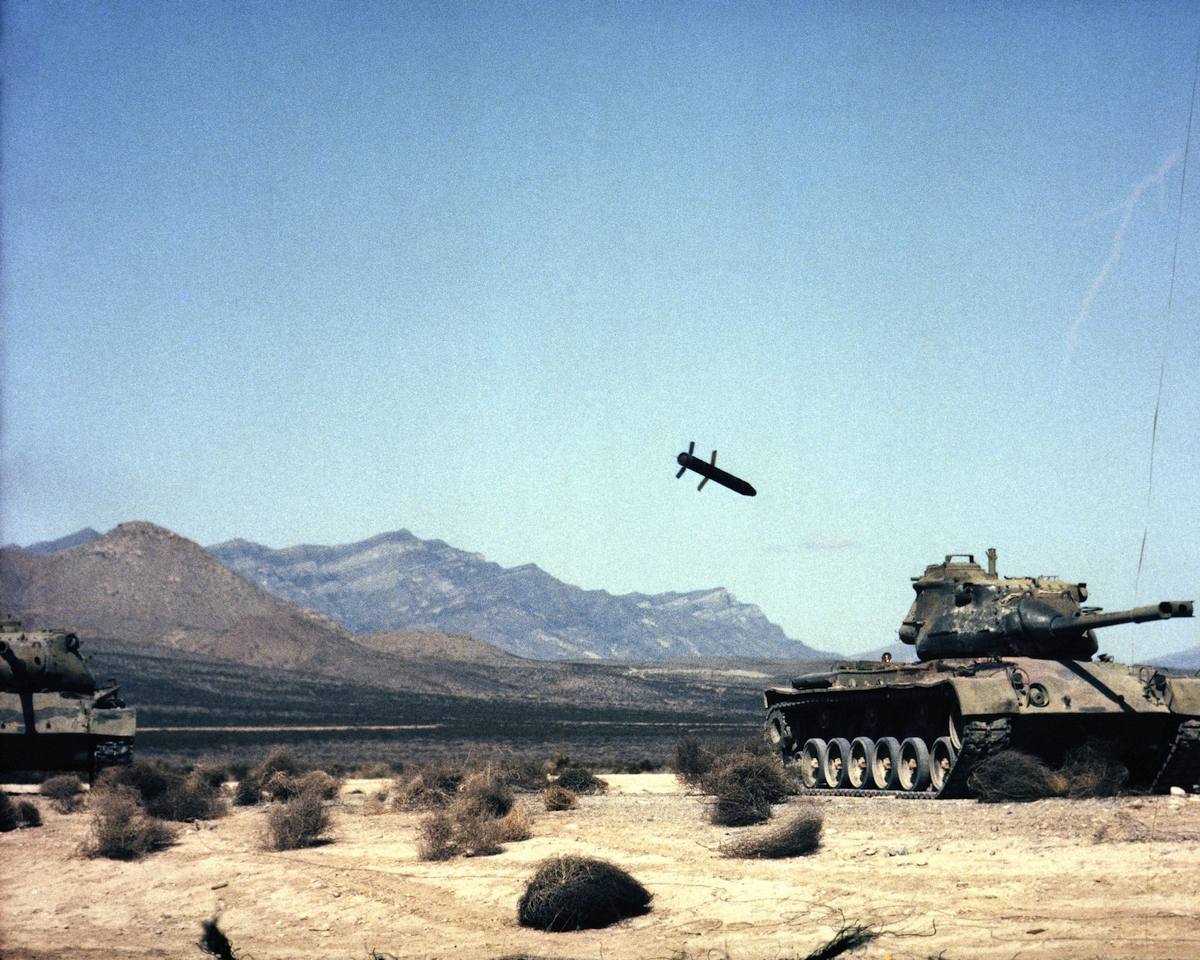Copperhead vs. ISIS

In recent years, precision, laser-guided artillery munitions have become far more proliferated. The Russian use of rounds as such in Syria has caught a lot of media attention. The Russian military is implementing this armament broadly, also involving UAVs in a target-designating role. It turns out that another guided artillery munitions were used against ISIS in the Middle East. The above refers to the US-made Copperhead system.
Copperhead is a laser-guided artillery weapon that dates back to the Cold War period. The engineering effort tied to this round began in the mid-1970s. Martin Marietta (today - a part of Lockheed Martin) was the designated contractor. Lockheed Martin's datasheet suggests that Copperhead utilizes several gyroscopes and computer systems that would withstand 8 thousand Gs.
This is the G-range to which a 155 mm howitzer projectile is exposed when fired out of the barrel. And this is why the electronics applied need to be rugged. They are a design challenge, as opposed to systems applied in laser-guided bombs, dropped from aircraft moving at speeds of no more than several hundred meters per second.
The M172 system was perceived as one of the elements of the anti-tank defence. The capability that it was designed to provide was to neutralize individual targets, including mobile targets, at a distance of up to 16 kilometers. Copperhead was to make it possible to neutralize armoured targets with a single shot, with warhead optimized for anti-tank purposes. The designers assumed that both land- as well as airborne designators on helicopters, and, ultimately, UAVs, could be used for guidance purposes.

The implementation of this programme was prematurely interrupted by the fiscal limitations of the late 1980s. Contrary to numerous Cold War programmes that were not completed (such as the SADARM system), Copperhead reached the stage of series manufacturing and entered service. It has been tailored for being used with several M109 howitzer variants and towed 155 mm guns. It was also exported to several nations.
The Copperheads were first used a year after the manufacturing was finalized - in 1991, during Operation Desert Storm. The rounds were being successfully employed against fortified infrastructure (such as observation outposts), and armour, including ZSU-23-4 Shilka AAA systems, or main battle tanks. 1st Cavalry Division was the first unit to use the Copperheads, in coordination with the use of cluster munitions.
Information on active use of this system by the US Army was missing during the upcoming years, which led to the conclusion that the rounds were no longer utilized. However, recently it turned out that the M172 munitions can be still used in combat. In 2017 the Lebanese army used these rounds against ISIS, The Drive reported. Lebanon has been one of the few export users of this system. The Lebanese side shared the materials recorded during the operation. Nonetheless, they may also include airstrikes. The imagery shown here presents the precise strikes against vehicles and infantry.
The use of the Copperhead rounds, alongside other US-made PGMs, such as the laser-guided Hellfire, and TOW ATGMs, was also confirmed by the US Department of State, in one of its recent releases. The US Embassy announced that a batch of 800 Copperhead systems was supplied to Lebanon in 2018, within the framework of stock replenishment. This means that the Americans are maintaining these PGMs in a “ready-to-use” state. The M172, it seems, can still be effectively employed.
One could risk stating that the history goes in a circle since the Middle East has become an arena where two types of legacy Cold War precision-guided munitions were used - Krasnopol and Copperhead. It remains an open question whether the Copperheadsky, the Russian system, has been developed based on intelligence gathered by the Russians, on the other side of the Iron Curtain. It is certain though that it is still being employed at a large scale, and that it would be perfected, once its advantages became obvious in Syria.
The laser-guided artillery munitions are going through a Renaissance right now, among NATO nations. The United States of America is working on the Excalibur-S munitions that would, alongside the standard GPS/INS guidance unit, also feature a laser guidance system for the terminal phase of the engagement. This, in turn, would make it possible to hit the targets, even when they are on the move.
